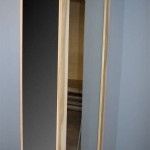How to Mirror a Mac to a Samsung TV
Mirroring a Mac display to a Samsung TV offers a larger viewing experience for presentations, entertainment, or simply extending the workspace. Several methods facilitate this screen sharing, each with its own advantages and requirements. This article explores the most common and reliable options.
Using AirPlay
AirPlay is the most straightforward method for mirroring a Mac to a compatible Samsung TV. Newer Samsung TV models (2018 and later) often have AirPlay 2 built-in, allowing direct wireless streaming from the Mac. To check compatibility, consult the Samsung TV's user manual or the manufacturer's website.
To mirror using AirPlay, ensure both the Mac and the Samsung TV are connected to the same Wi-Fi network. On the Mac, click the Control Center icon in the menu bar. Select "Screen Mirroring." The available AirPlay devices, including the Samsung TV, will appear in the dropdown menu. Select the TV to initiate mirroring. The Mac's display will then be mirrored on the television.
Adjusting the mirroring settings, such as resolution and scaling, can be accomplished through the Mac's display settings. Ending the mirroring session is as simple as selecting "Stop Mirroring" from the Control Center's Screen Mirroring menu.
Utilizing an HDMI Cable
A wired connection using an HDMI cable provides a stable and reliable mirroring solution, particularly beneficial for activities requiring minimal latency, such as gaming or video editing. This method requires an HDMI cable and, potentially, an adapter for the Mac, depending on the specific Mac model.
First, connect one end of the HDMI cable to the HDMI port on the Samsung TV. Next, connect the other end to the HDMI port on the Mac or to an appropriate adapter connected to the Mac's display output port. On the Samsung TV, select the correct HDMI input source using the remote control or the TV's source button. The Mac's display should automatically mirror to the TV. If not, access the Mac's display settings and select the Samsung TV as the output display.
The resolution and other display settings can be adjusted through the Mac's display preferences. Disconnecting the HDMI cable ends the mirroring session.
Mirroring with Third-Party Apps
Several third-party applications offer screen mirroring functionality for devices that may not be directly compatible through AirPlay or lack convenient HDMI connectivity. These apps typically require installation on both the Mac and the Samsung TV (either directly or through the TV's app store) and function by establishing a connection over the local network.
Research and select a reputable third-party app that supports both macOS and Samsung TVs. Follow the app's specific installation and setup instructions for both devices. Generally, these apps will require both the Mac and the TV to be connected to the same network. Once configured, initiating mirroring is typically a matter of selecting the target TV within the application interface on the Mac.
Features and performance may vary depending on the chosen application. Consult the app's documentation for specific instructions and troubleshooting tips. Disconnecting the mirroring session is usually handled within the application's interface.
Troubleshooting Common Issues
Several common issues can arise when attempting to mirror a Mac to a Samsung TV. If no signal appears on the TV, ensure the correct input source is selected on the TV and that all cables are securely connected. For AirPlay, verify both devices are on the same Wi-Fi network and that AirPlay is enabled on both the Mac and the TV. Restarting both devices can often resolve temporary connectivity issues.
If experiencing lag or poor video quality, try moving the devices closer together or using a wired connection via HDMI for improved stability. If using a third-party app, consult the app's support resources for troubleshooting specific to that application.
Optimizing Performance
For optimal performance, especially for activities demanding low latency, a wired HDMI connection is generally recommended. For general screen sharing and presentations, AirPlay offers a convenient wireless solution. Ensure the Mac and the Samsung TV are running the latest software updates to maintain compatibility and address any known bugs. Closing unnecessary applications on the Mac can also free up system resources and improve mirroring performance.
Security Considerations
When using third-party mirroring apps, ensure they are from reputable sources to mitigate security risks. Be mindful of the network security when mirroring, particularly on public Wi-Fi networks. Avoid mirroring sensitive information when using unsecured networks.

How To Screen Mirror Mac Samsung Tv Step By Guide

How To Mirror Mac Screen Samsung Tv Without Apple

How To Screen Mirror Macbook Samsung Tv

How To Connect Mac Samsung Smart Tv A Quick Solution

How To Airplay Mirror Mac Samsung Smart Tv Without Apple Redmond Pie

How To Mirror A Mac Smart Tv

Mirror For Samsung Tv Mac Macupdate

14 Fixes For Screen Mirroring Mac To Samsung Tv Not Working Techwiser

6 Ways How To Mirror Your Macbook Samsung Tv

Connect Hisense Tv To Apple Mac Wireless Screen Mirror App








